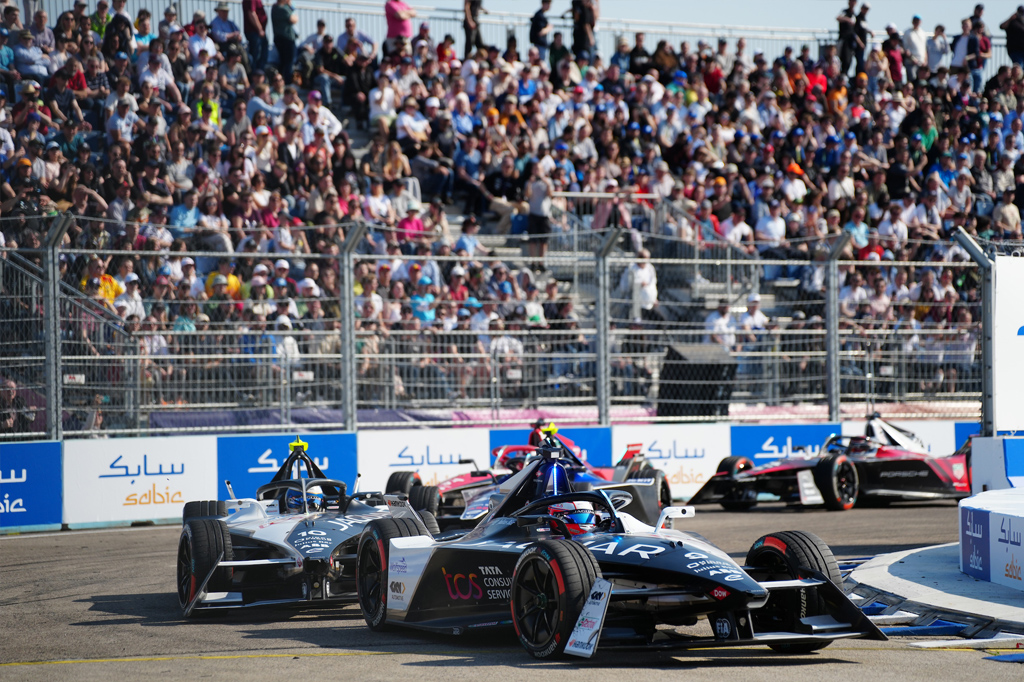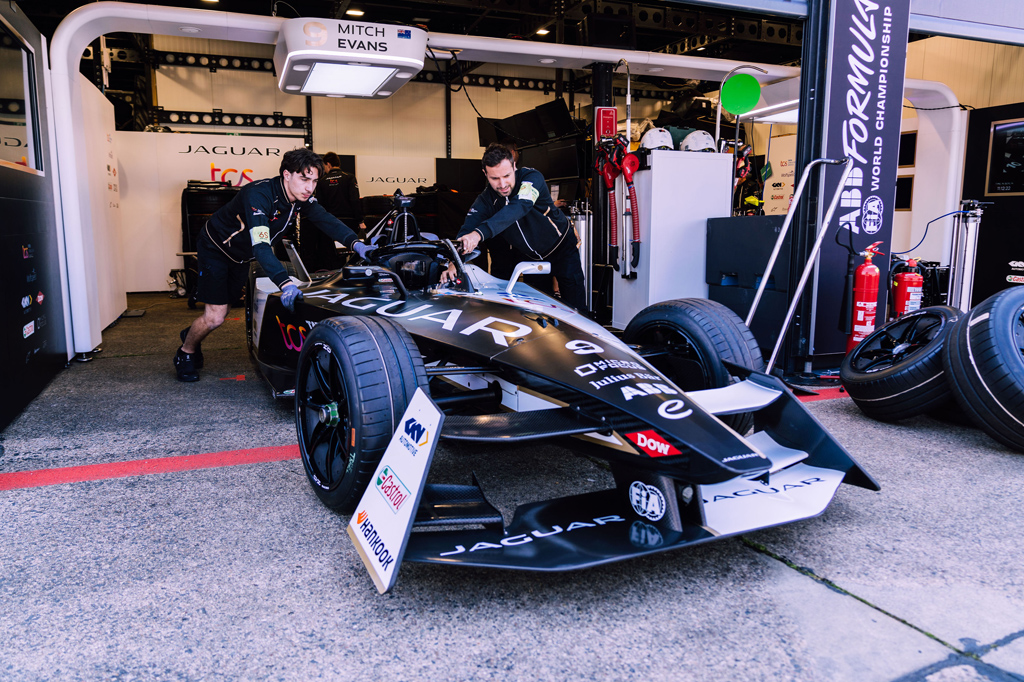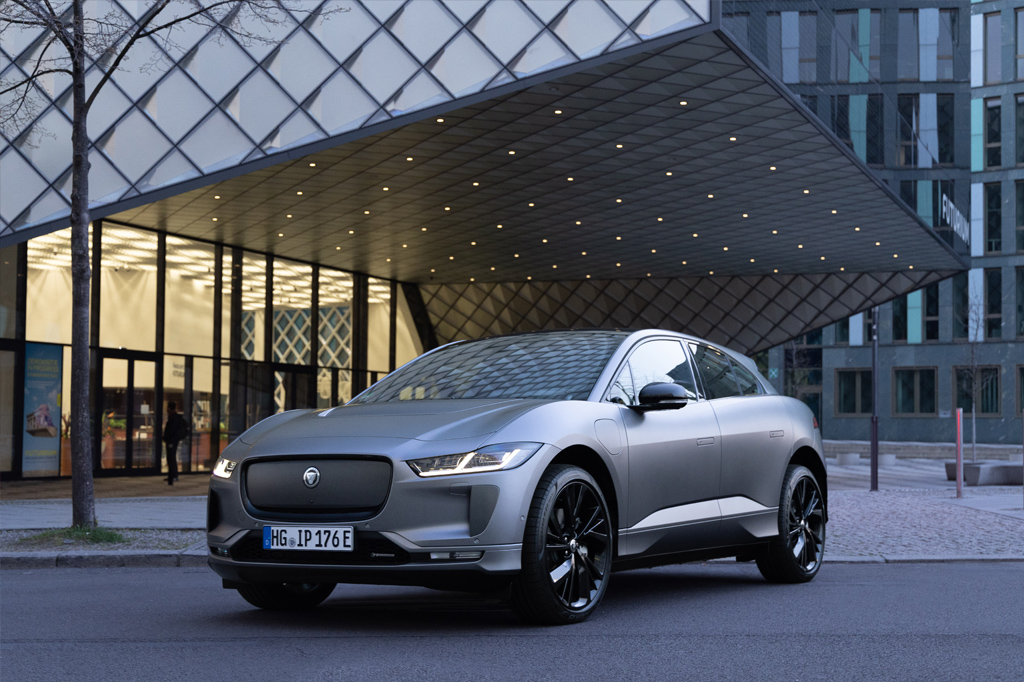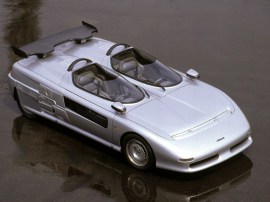Historic Formula E double victory for Jaguar TCS Racing underlines its innovations

Jaguar’s heavy investment in race-to-road technology is a strategy that appears to be paying off, following a double victory for its Formula E race team this weekend. On Saturday, New Zealand’s Mitch Evans took first place and teammate, Britain’s Sam Bird secured second in a historic 1-2 finish in Berlin.
Neither are newcomers to Berlin’s grippy concrete track – actually the former Tempelhof airport, which is more used to having walkers, cyclists and kite-fliers on its aprons and runways these days. Similarly, both Bird and Evans have been with Formula E since the early days and Berlin has been a regular on-and-off stop on the calendar for the entire history of the electric racing series.
The 43-lap race turned out to be one of the most gripping of the series to date. There was the usual dualling that comes with this close-contact formula, a few shunts and resulting damage, plus lots of great driving.

It was also the perfect showcase for illustrating just how much Gen3 Formula E cars are developing, especially since the early days when Gen1 cars had just one electric motor and a lot less technology to help drivers make it to the end of the race. Today’s Formula E cars are faster too, with top speed capability of over 200mph, up by over 60mph compared to Gen1 cars. But, despite the extra tech, they’re lighter too.
Currently, all eleven of the race teams use the same carbon fibre chassis and battery, while power regeneration now comes from both front and rear axles. Hankook supplies the racing tyres, replacing Michelin for the latest season, so there is much common ground. Jaguar’s I-Type 6 Gen3 car is certainly more potent with 476hp and uses a second motor at the front for increasing regen – up to 600kw in fact, with 250kw coming from the front powertrain and 350kw from the rear. What has consistently stayed the same though is the level of tactics and technique that allows drivers to get the edge over their rivals.
Real-world testing is a big part of the reason for Jaguar making its return to racing back at the end of 2016. Since then, the company has been using developments produced from Formula E as part of its push towards being an all-electric luxury carmaker from 2025. For now, there’s the 2024 Jaguar I-Pace, which has been around since 2018 and has recently been on the receiving end of some cosmetic tweaks.

However, it’ll be the brand’s new four-door electric GT car that’s set to arrive in the next couple of years that’ll see Jaguar’s evolution gather pace. Built on the dedicated Jaguar Electrified Architecture or JEA, the new GT will arrive in 2025 and form part of a three-pronged, all-electric rollout that use the same platform. The Jaguar GT is expected to cost in the region of £100,000 and boast a tempting range of up to 430 miles.
Other beefier details surrounding the car are yet to emerge, but it’s easy to imagine some of the ideas and innovations used in Gen3 track cars filtering through to production models, including the ever-improving regen feature commonly found in modern EVs.
Saturday’s win in Berlin leaves the Jaguar TCS Racing team third in the 2023 ABB FIA Formula E World Championship. The pair didn’t do quite as well for the eighth round on Sunday though, with Evans finishing fourth and Bird nineteenth respectively due to the latter needing a hasty front wing switch. However, Jaguar’s racing duo is fifth and seventh in the driver standings as the team moves on to the next round in Monaco.
Related: The best electric cars reviewed and rated



